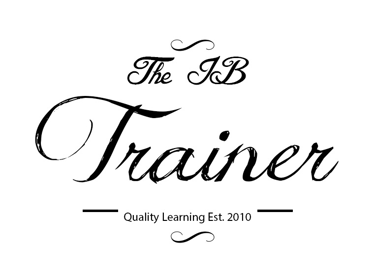The Future of Work How Flexible Organisational Structures Keep Businesses Alive
Explore modern IB Business organisational structures - project-based and Handy’s shamrock - with real-life examples and future-of-work insights.
IB BUSINESS MANAGEMENTIB BUSINESS MANAGEMENT MODULE 2 HUMAN RESOURCE MANAGEMENT
Lawrence Robert
10/14/20255 min read


The Future of Work: How Flexible Organisational Structures Keep Businesses Alive
Let's imagine for a second you’re managing a team building a bridge over the Thames. You’ve got engineers, safety officers, architects, and accountants - none of whom usually work together. For the next 18 months, they’re all yours. Then, it's project done, team disbanded. This is basically a project-based organisation in action.
Today we’re covering modern flexible structures - the kinds that real businesses use to survive in a constantly changing world. Because honestly? The rigid “tall” and “flat” structures we’ve studied before don’t always cut it when the world keeps reinventing itself.
Why structures can’t stay static
Businesses don’t live in a vacuum. Markets crash, AI arrives, pandemics hit, competitors change, and suddenly your perfect hierarchy feels like it’s from another century. Everything evolves, even Tesla is in trouble in 2025 for various factors, including political, but particularly for having to face Chinese competition.
Think about 2020 - companies worldwide discovered overnight that their structures weren’t ready for remote work. The ones that survived? Those that adapted fast - by creating temporary teams, embracing freelancers, and outsourcing like never before.
That’s exactly where project-based and shamrock organisations come in.
Project-Based Organisations - “The Charlie's Angels of Business”
Imagine assembling your own superteam every time a new project drops. You recruit the best coders, designers, marketers, and analysts - even if they’re from different departments - to deliver one big goal.
That’s what a project-based organisation does.
Instead of sticking to fixed departments, it borrows people temporarily from across the business, then disbands the team when the project ends.
IB Business Management Real-life examples
Bechtel (UK Construction Giant): When Bechtel was working on Crossrail (London’s new railway), they created project teams for each tunnel, station, and system. Once finished, those teams were dissolved and reallocated.
Airbus: When designing new aircraft, Airbus assembles international project teams of engineers and designers from France, Germany, Spain, and the UK - each project is its own mini-organisation.
Pixar: Each movie (like Toy Story 5) is run as a self-contained project. Writers, animators, sound engineers, and marketers join forces temporarily, then disperse to the next creative mission.
IB Business Story time: “The Battle of Two Bosses”
Meet Zara, a marketing executive at a global electronics company. One week, her line manager says, “Focus on next quarter’s ad campaign.”
Then, the project manager of a new product launch says, “Forget ads - I need you for the new smartwatch rollout.”
Both are her bosses. Welcome to project-based confusion.
Zara’s story shows why these structures can sometimes be tricky: competing deadlines, overlapping authority, and one very tired employee. Yet, companies still use them because the payoff - creativity, speed, and innovation - often outweighs the chaos.
The Pros and Cons
Advantages
Encourages innovation and teamwork
Flexible - adapts to changing goals quickly
Motivates staff with variety and responsibility
Ideal for complex, one-off projects
Disadvantages
Staff confusion from multiple managers
High coordination costs
Difficult to monitor performance
Stressful workloads for project members
IB Business Management Tip
When analysing a case study, look for hints like “temporary teams,” “cross-functional collaboration,” or “one-off projects.”
Those are giveaways that you’re dealing with a project-based structure.
Handy’s Shamrock Organisation - The 3-Leaf Future of Work
Charles Handy, an Irish management thinker, noticed in the early 1990s that businesses were shedding full-time staff like trees shed leaves. He compared modern firms to shamrocks - three leaves, each representing a type of worker.
Fast forward to 2025, and his model feels more relevant than ever.
Leaf 1: The Professional Core
These are your permanent, full-time experts - the heartbeat of the organisation. They handle essential operations and strategic decisions.
Think of accountants at PwC, surgeons in the NHS, or engineers at Rolls-Royce.
With automation, AI, and outsourcing, companies don’t need as many core employees as before. The rest? Outsourced or hired per project.
Leaf 2: The Contingent Workforce
These are temporary or part-time staff - think freelancers, contractors, or “portfolio workers” juggling multiple clients. They offer flexibility without long-term costs.
But for workers, it’s a double-edged sword - flexible hours, yes, but less job security and benefits.
The UK’s gig economy (Uber, Deliveroo, Fiverr, etc.) has exploded in recent years. Over 4.4 million people now earn income from gig work, showing Handy was decades ahead of his time.
Leaf 3: Outsourced Vendors
The third leaf is made up of specialists hired externally - for marketing, IT, logistics, design, or manufacturing. They might not even be in the same country.
IB Business Management Real-life Example: Apple outsources much of its manufacturing to Foxconn in China. Many digital agencies in the UK outsource coding or data analysis to partners in Eastern Europe or India.
Outsourcing saves money but can cause control and quality issues - like Nike’s long-running supply chain controversies.
IB Business Management Real-life examples
Google: Core developers and executives form the professional core. Freelancers and temp designers handle campaigns (contingent leaf). Meanwhile, outsourcing covers data labelling, catering, and logistics.
BBC: Uses a shamrock structure - permanent journalists at the core, freelance writers and producers as the second leaf, and outsourced editing or tech contractors as the third.
Unilever: Maintains a lean core team, outsources IT and payroll, and relies on contractors for project launches.
Benefits
Flexibility: Companies scale up or down quickly.
Cost savings: Fewer full-time employees with benefits.
Access to specialists: Bring in experts when needed.
Drawbacks
Job insecurity for non-core staff
Harder to build loyalty or culture
Risk of losing control over outsourced quality
Informal Structures - “The Hidden Web Behind the Chart”
Here’s the secret every business manager knows: no organisational chart tells the full story.
Behind the neat lines and boxes, there’s a web of informal structures - friendships, networks, WhatsApp groups, “favourites” - all of which can make or break communication.
The many years you have spent at school possibly made you realise that the real leader of a group project isn’t the one who was “assigned” leader? The same happens in business. The informal structure often carries more influence than the formal one.
Smart business managers don’t fight it - they use it.
Why Flexible Structures Matter More Than Ever
We’re in a world of constant flux. Businesses that stick to one rigid structure risk extinction faster than you can say “Kodak.”
The rise of AI is reshaping work distribution.
Remote work demands decentralised communication.
Younger generations crave autonomy and variety.
Modern organisations often mix structures - a functional core, regional operations, project-based teams, and outsourced services.
That’s what examiners love to see in your IB Business Management answers - nuance. Real companies don’t fit neatly into one diagram. They blend.
IB Business Management Exam Application
When you get a Paper 1 or Paper 2 question like:
“Discuss the appropriateness of Handy’s shamrock organisation for a multinational facing increased competition.”
Think:
Does the business need flexibility or control?
Can they afford outsourcing risks?
How does their culture support freelancers or remote staff?
Tie your evaluation to the business context, not just theory. For example:
“A shamrock structure could help Spotify reduce costs by outsourcing non-core roles, but may threaten its creative culture if overused.”
Recap Table
Stay well,




IB Complete Support Courses, a new generation of affordable support materials directed at IB students seeking grades 6 or 7.
© Theibtrainer.com 2012-2025. All rights reserved.
